Learn About Lighting
- Lighting Terminology - Explained!
- PAR & PUR- Photosynthetically Available Radiation - What is it?
- Spectrum & Spectra - defined!
- What is Correlated Colour Temperature (CCT) & Kelvin
- What does Colour Rendering Index (CRI) mean?
- What are Lux and Lumens?
Lighting Terminology - Explained!
There are so many technical terms withing lighting, it’s a whole science of its own. PARwise has multiple parameters and within this section you’ll be able to learn what they all mean and the relevance to us as aquarists. Get a cup of tea and read on!
PAR & PUR- Photosynthetically Available Radiation - What is it?
PAR means Photosynthetically active radiation. It is a quantity measurement of all of the light that falls between 400nm and 700nm. It is used to give an indication of the power of light present that is used by organisms which have photosynthetic cells such as plants, corals and algae.
The graph below shows the total light PAR range and what parts of it are used by various photosynthetic cells, zooxanthellae and the combined line of light used by all photosynthetic pigments. These are the lines overlaid on the graph.
The actual parts of the PAR spectrum that is used by photosynthetic cells is called ‘PUR’ Photosynthetically Usable Radiation.
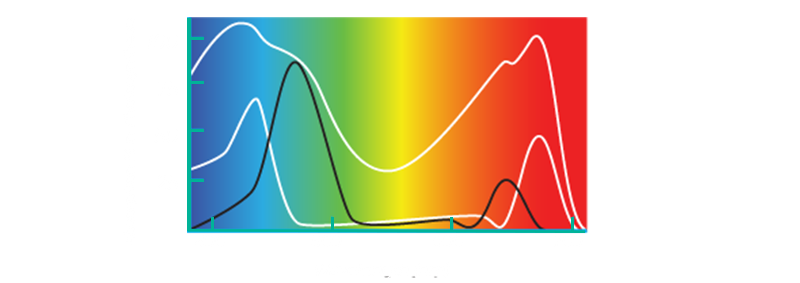
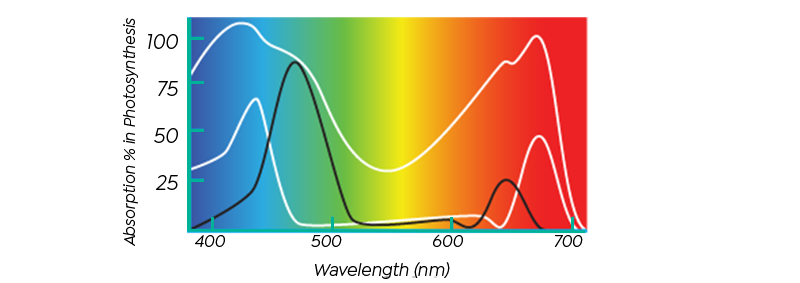
As you can see, typically not much green light is used and absorbed, therefore it is transmitted or reflected by the coral/plant which is why most plants look green. It also shows why only using PAR as a measurement isnt great; for instance a light with high levels of green light would measure very high PAR but have little usable light for food where as a more reddish light may have a lower PAR but produce a higher growth rate due to it being a more useable spectra. A green light would also make plants look very healthy (while potentially starving them) as they would reflect the green light but look healthy. Different coral pigments require slightly different spectra.
Spectrum & Spectra - defined!
A light spectrum is a group of different wavelengths of light, producing by a light source. Each wavelength is measured in nanometers - nm. Each nanometer of light represents a very specific colour within the spectrum. This range is defined as a spectrum. The plural is a spectra. For example - the PAR spectral range is from 400nm to 700nm. It’s important to remember that we can’t see all of the light spectrums that exist such as UV and Infrared both which have important roles in biology and ecology. Fish have far more developed colour vision than we do and can see into the UV and IR spectra! Measuring spectrum is what your PARwise does on the ‘Colour Analyser’ setting.
What is Correlated Colour Temperature (CCT) & Kelvin
Correlated Colour Temperature is a number, measured in degrees Kelvin, that helps to describe the human perception of the colour of light, whether it is warm or cool. (Red to Blue) Traditionally a kelvin or K rating is used by aquarist as a guide to help choose a lighting system that is spectrally the most suitable for their biotope. Different biotopes and organisms have different spectral requirements and this should be viewed as a separate issue to the quantity of light (PAR). We should look at the spectra as a measurement of quality or fit for purpose for that specific biotope. As a rule fresh water lights have a lower K (redder) and marine lights have a higher K (bluer).
So the where does the Kelvin scale for the light sources on our aquariums come from? If we imagine a black object being heated it would glow red first then white hot and eventually blue. The chart below shows this heating process and attaches the value K against stages of light colour radiated from the object. Natural Midday Sunlight is described as being 6500k and typically in the middle of the scale.
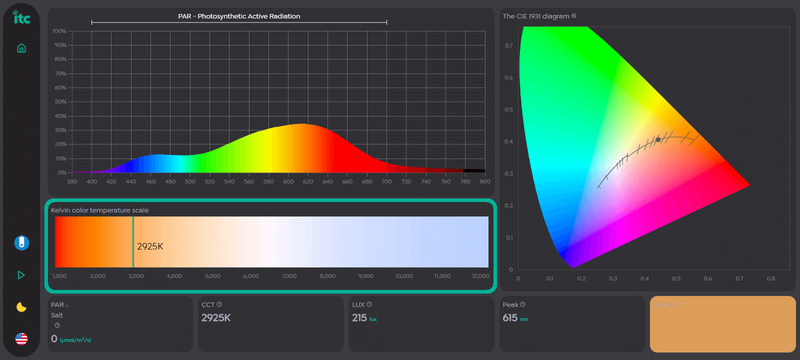
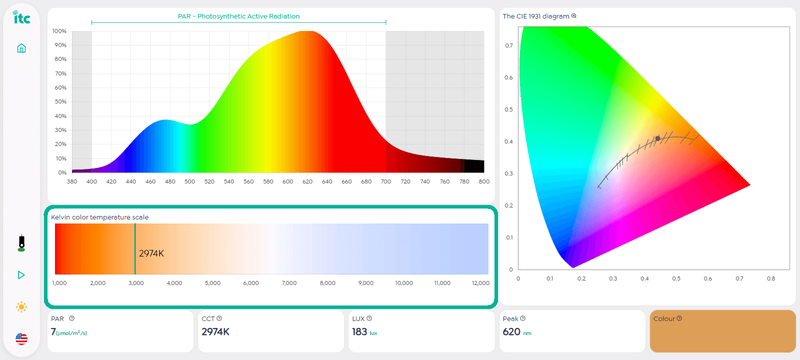
A chart like this is used for characterising terrestrial light as K and usually through the day a transition of K occurs from sunrise (2500K) to daylight (6500k) and occasionally overcast days can rise to 10,000K or higher. Why does K increase when the sky is overcast? The answer is simple water droplets filter light and it filters red out first. If we apply this knowledge to the aquatic environment and use the term K we can imagine that a plant/coral in shallow water will receive a light close to daylight whereas coral on reefs meters down will receive a very different spectra even though it’s from the same light source (the sun) this is because the red content is filtered out and continues to with depth as shown below.
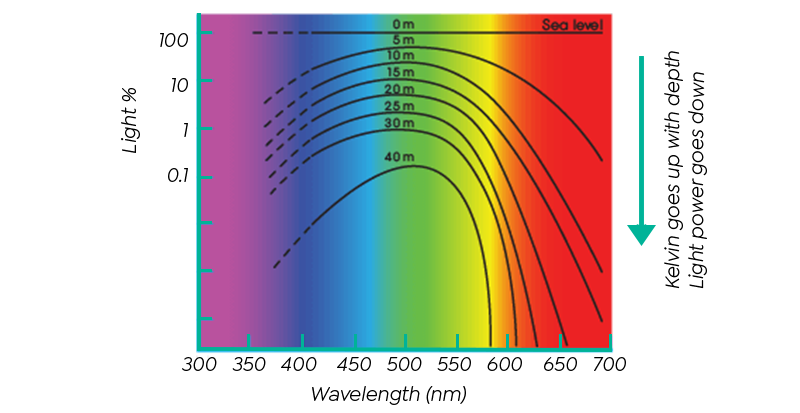
Therefore plants and coral have evolved different survival strategies with types of chlorophyll that are tuned to the spectra they would naturally receive; supplying the wrong spectra can either starve organisms or encourage other nuisance species such as algae.
In basic terms K is dictated by the biggest (tallest and widest) spectral peaks from a light source and how close the overall colour produced falls next to the Planckian locus line. The Planckian locus (or black body locus) line is shown as the black line on the CIE colour space diagram below. Taken from the PARwise web app.


PARwise works out the K of the light by passing zyx colour coordinates of the light it receives through a set of known equations. The device can measure very far along the plank line when compared to traditional devices and this is important as the growth of LED’s has meant that light sources can in fact have high levels of blue and violet which will very steeply raise K.
K is a useful tool but as many aquarium owners use mixed light sources or tubes with different phosphor in the combined light given off is often difficult to understand and it will change throughout the aquarium due to shadow and depth. This is why PARwise is submersible and allows the user to move the device to specific parts of the aquarium, log and displaying the light reading. More importantly and less understood is how aquarium light output can change over time as from the second they are turned on no matter what type of device they are they will change spectral output as they age. Often with metal halide blue output will degrade first and K will shift down toward red, regularly logging spectrum and K along with PAR will help you understand the state of your lighting over time.
What does Colour Rendering Index (CRI) mean?
The Colour Rendering Index (CRI) value is a measurement of the quality of the light in reproducing the natural colour of an object in comparison to illumination under midday natural white sunlight at the equator. This in turn means how accurately we as humans will perceive that colour, vs natural light. A CRI of 80 or under is deemed as poor-quality light and we won’t see colours ‘correctly’. An example of this would be a traditional incandescent light bulb. A light with a CRI of 90 or above is good and 95+ is excellent – typical of the 6500K white LED’s used in high end LED light fixtures. A high CRI level does not represent the quality of the fixture itself or the amount of light output, nor the possible colour of that light. CCT will tell you the combined colour temperature in Kelvin. Spectrum will tell you what wavelengths of light (colours) make up the visible CCT.
What are Lux and Lumens?
Lux and Lumens are similar measurements but most importantly to note first, it is a measurement that was defined for human vision. The measurement is the peak light intensity that the human eyes can see (circa peak 555nm - green). Most lux meters cannot ‘see’ light over 580nm. Animals such as fish and birds have a far wider colour vision than that of that of our own. Lux and Lumen measurements are typically useful in photography, not so much in biology. This is why spectrum is also relevant when considering light measurements. Many lighting manufacturers list Lux and or Lumen levels which is why we have included it in PARwise so you can measure them too.
• Lux is a measurement of how much light within the human vision range, falls on a surface. One lux is equal to one lumen per square meter (lm/m2). • Lumens is the total amount of light emitted in all directions, by a light source – within the human vison range.
As a result, a lux measurement should always be followed by a distance e.g 100 Lux at 30cm this is because as the distance increases, the light photons are spread over a further distance and be perceived as lesser. If you are sharing a LUX measurement from PARwise – you should also note and share the distance from the sensor to the light source, so it is replicable.